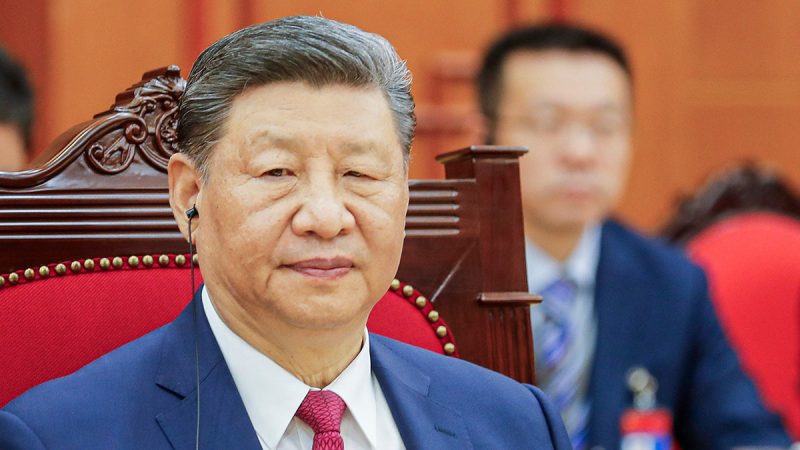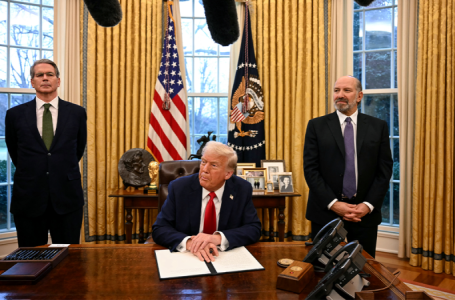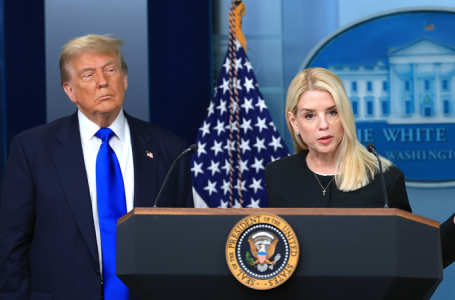LIZ PEEK: Hillary is finally paying dearly for dirty tricks that hurt Trump and American voters
Xi Jinping’s surprise no-show at BRICS Summit fuels speculation about China’s global standing




Chinese President Xi Jinping will not attend this week’s BRICS Summit in Brazil, marking the first time the Chinese leader has missed the gathering of major emerging economies. The abrupt decision has triggered widespread speculation about internal political dynamics within China and the fraying cohesion of BRICS itself.
China’s official explanation — a ‘scheduling conflict’ and the fact that Xi already met with Brazilian President Luiz Inácio Lula da Silva earlier this year, according to the South China Morning Post — has been met with skepticism. Premier Li Qiang will attend the summit in Xi’s place, continuing a recent trend of Xi scaling back his appearances on the global stage.
‘That doesn’t make sense,’ said Gordon Chang, an expert on U.S.-China relations. ‘There are many other countries at the BRICS summit, not just Brazil. To me, it’s extremely significant that Xi Jinping is not going. It suggests turbulence at home — there are signs he’s lost control of the military and that civilian rivals are reasserting power. This is a symptom of that.’
Bryan Burack of the Heritage Foundation agrees that Xi’s absence underscores deeper issues: ‘It’s another indication that BRICS is not going to be China’s vassalization of the Global South.’ He noted that countries like Brazil and Indonesia have recently imposed tariffs on China over industrial overcapacity and dumping, moves that suggest widening rifts within the group.
‘China is actively harming all those countries for the most part, maybe with some exceptions, through its malign trade policies and dumping and overcapacity.’
Tensions with India and global trade pressure may also be factors
Some analysts point to rising China-India friction as a contributing factor in Xi’s decision to skip the summit.
‘China has been at war with India for decades, essentially,’ Burack said. ‘These are fundamentally opposing interests. It’s difficult to see China changing its behavior in the near term, and that will keep tensions high.’
India’s Prime Minister Narendra Modi is expected to take a leading role at the gathering, potentially another deterrent for Xi’s attendance.
Another key leader — Russian President Vladimir Putin — is only expected to address the group by video.
BRICS: United in name, divided in decades-long tensions
Formed by Brazil, Russia, India and China and later joined by South Africa, BRICS was envisioned as a non-Western counterweight to G7 dominance. It has expanded to include Egypt, Ethiopia, Iran, the UAE and, most recently, Indonesia, strengthening its economic footprint.
Economist Christian Briggs highlighted BRICS’s massive scale: ‘BRICS now comprises 12 full members and up to 23 when counting partners. Collectively, they account for over 60% of the world’s GDP and around 75% of the global population. They control vast natural resources and a growing share of global trade flows.’
Yet despite its scale, the bloc remains ideologically and strategically fragmented. ‘It’s a group of countries that hate each other,’ Burack said bluntly. ‘China is harming many of them through unfair trade practices. There’s not a lot of incentive for real unity.’
Currency ambitions and strategic divergences
The alliance’s aspirations to challenge the U.S. dollar through alternative payment systems and a potential BRICS currency have gained media traction — but experts caution against overestimating this threat.
‘There’s been a lot of fearmongering about a BRICS currency,’ said Burack. ‘But the interests of these countries are completely divergent. There’s more smoke than fire when it comes to a currency challenge to the dollar.’
Chang echoed this skepticism: ‘The only country that can challenge the dollar is the United States. Weakness in the dollar is due to what we are doing domestically, not what the BRICS are doing.’
Still, Briggs offered a counterpoint, arguing that BRICS members are already reshaping global currency flows.
‘They’re moving away from the dollar into digital yuan, rupees, rubles. China has launched a SWIFT alternative already adopted by the Caribbean banking sector — trillions of dollars are shifting.’
Is BRICS still a threat to U.S. influence?
While its cohesion remains questionable, BRICS poses a long-term challenge to U.S. influence — particularly in regions where Washington has retreated diplomatically and economically.
‘China filled the void left by the U.S. in places like Africa,’ said Briggs. ‘Now it controls about 38% of the world’s minerals. Meanwhile, Russia’s economy has doubled despite sanctions, because they preemptively reduced reliance on the dollar.’
Yet Chang sees India as a brake on any aggressive anti-Western tilt. ‘BRICS has an ‘I’ in it—and that’s India. Modi doesn’t want to be part of an anti-Western bloc. As long as India’s in BRICS, the rest of the world is safe.’
A missed opportunity — or a calculated power move?
To some, Xi’s no-show signals instability in Beijing. To others, the opposite: it demonstrates confidence in China’s dominance over the other BRICS members.
‘He doesn’t have to be there,’ Briggs contended. ‘Xi’s power allows him to delegate. China is trading with nearly 80% of the world now. He’s moving the agenda forward even in absentia.’
What’s clear is that BRICS continues to evolve — its internal contradictions as visible as its geopolitical ambitions. Whether Xi’s absence marks a retreat or a recalibration remains one of the key questions hovering over the summit in Brazil.











